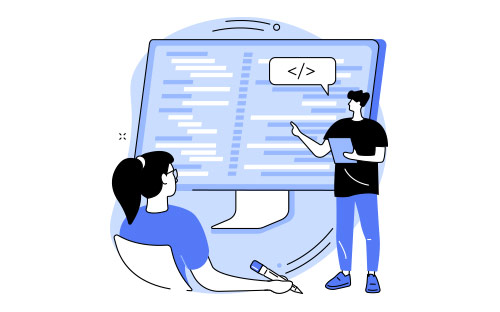2022-05-20 15:33:23 来源:中国教育在线
剑桥雅思13Test3Passage2阅读原文翻译 How baby talk gives infant brans a boost 具体的内容和中国教育在线平台一起来看看吧

剑桥雅思13Test3Passage2阅读原文翻译 How baby talk gives infant brans a boost
剑桥雅思13Test3Passage2阅读原文翻译 How baby talk gives infant brans a boost 儿语在婴儿大脑发育中的作用
剑桥雅思13 Test3 Passage2阅读原文翻译
段落A
The typical way of talking to a baby – High-pitched, exaggerated and repetitious – is a source of fascination for linguists who hope to understand how ‘baby talk’ impacts on learning, Most babies start developing their hearing while still in the womb, prompting some hopeful parents to play classical music to their pregnant bellies. Some research even suggests that infants are listening to adult speech as early as 10 weeks before being born, gathering the basic building blocks of their family’s native tongue.
高音调,夸张和重复-这种对婴儿说话的典型方式对那些希望理解儿语如何影响学习的语言学家来说充满了吸引力。大多数婴儿还在母亲子宫里的时候就发育出听觉。这促使一些满怀希望的家长对着他们怀孕的腹部播放古典音乐。一些研究甚至建议婴儿在出生前10周就开始听成人说话,收集获取其家庭自身语言的基本构成要素。
段落B
Early language exposure seems to have benefits to the brain – for instance, studies suggest that babies raised in bilingual homes are better at learning how to mentally prioritize information. So how does the sweet if sometimes absurd sound of infant-directed speech influence a baby’s development? Here are some recent studies that explore the science behind baby talk.
语言的早期接触似乎对大脑有好处-例如,研究表明,双语家庭中长大的孩子在学习如何优先处理信息方面表现的更好。所以,甜蜜语言,或者说有时以婴儿为导向、毫无意义的话语如何影响婴儿的发育呢?以下是最近一些探索儿语背后科学原理的研究。
段落C
Fathers don’t use baby talk as often or in the same ways as mothers – and that’s perfectly OK, according to a new study. Mark VanDam of Washington State University at Spokane and colleagues equipped parents with recording devices and speech-recognition software to study the way they interacted with their youngsters during a normal day. ‘We found that moms do exactly what you’d expect and what’s been described many times over,’ VanDam explains. ‘But we found that dads aren’t doing the same thing. Dads didn’t raise their pitch or fundamental frequency when they talked to kids.’ Their role may be rooted in what is called the bridge hypothesis, which dates back to 1975. It suggests that fathers use less familial language to provide their children with a bridge to the kind of speech they’ll hear in public. ‘The idea is that a kid gets to practice a certain kind of speech with mom and another kind of speech with dad, so the kid then has a wider repertoire of kinds of speech to practice,’ says VanDam.
父亲并不像母亲那样经常使用儿语,其方式也有所不同。根据一项最新的研究,这完全没问题。斯波坎华盛顿州立大学的Mark Vandam和其同事为父母佩戴录音装置和语音识别软件,以研究他们日常生活中与孩子的互动方式。“我们发现,母亲的做法与你所期待的和之前已经描述过很多次的完全一致”,VanDam解释到。“但我们发现父亲并没有做相同的事情。当对孩子说话时,父亲没有提高他们的音调或基础频率”。他们的角色或许根植于所谓的“桥梁假设”。该理论可以追溯到1975年。它认为,父亲使用不那么家庭化的语言为他们的孩子提供一座桥梁,方便孩子过渡到他们在公共场所会听到的语言。“该观点认为孩子需要与母亲练习一种特定的语言,并且跟父亲练习另外一种语言,以便孩子随后可以对更广泛的说话方式进行练习”,Vandam说。
段落D
Scientists from the University of Washington and the University of Connecticut collected thousands of 30-second conversations between parents and their babies, fitting 26 children with audio-recording vests that captured language and sound during a typical eight-hour day. The study found that the more baby talk parents used, the more their youngsters began to babble. And when researchers saw the same babies at age two, they found that frequent baby talk had dramatically boosted vocabulary, regardless of socioeconomic status. ‘Those children who listened to a lot of baby talk were talking more than the babies that listened to more adult talk or standard speech,’ says Nairán Ramírez-Esparza of the University of Connecticut. ‘We also found that it really matters whether you use baby talk in a one-on-one context,’ she adds. The more parents use baby talk one-on-one, the more babies babble, and the more they babble, the more words they produce later in life.’
华盛顿大学和康涅狄格大学的科学家通过给26个孩子配备可以在一天8小时中捕捉语言和声音的录音背心,收集了数千份父母和孩子之间长度为30秒的对话。研究发现,父母文章来自老烤鸭雅思使用的儿语越多,他们的孩子咿呀学语的时间也会更多。当研究者将目光聚焦到两岁的儿童身上时,他们发现无论社会经济地位如何,频繁的儿语明显促进了词汇量的增长。“相比于那些听了更多成人谈话或者标准话语的孩子来说,那些听了许多儿语的孩子说话更多”,康涅狄格大学的Nairan Ramirez-Esparza说到。“我们还发现,是否在一对一的情况下使用儿语同样重要”,她补充到。父母在跟孩子进行一对一交流时使用的儿语越多,孩子咿呀学语的也越多。而孩子咿呀学语的越多,他们在日后的生活中使用的词汇也越多”。
段落E
Another study suggests that parents might want to pair their youngsters up so they can babble more with their own kind. Researchers from McGill University and Université du Quebec a Montreal found that babies seem to like listening to each other rather than to adults – which may be why baby talk is such a universal tool among parents. They played repeating vowel sounds made by a special synthesizing device that mimicked sounds made by either an adult woman or another baby. This way, only the impact of the auditory cues was observed. The team then measured how long each type of sound held the infants’ attention. They found that the ‘infant’ sounds held babies’ attention nearly 40 percent longer. The baby noises also induced more reactions in the listening infants, like smiling or lip moving, which approximates sound making. The team theorizes that this attraction to other infant sounds could help launch the learning process that leads to speech. ‘It may be some property of the sound that is just drawing their attention,’ says study co-author Linda Polka. ‘Or maybe they are really interested in that particular type of sound because they are starting to focus on their own ability to make sounds. We are speculating here but it might catch their attention because they recognize it as a sound they could possibly make.’
另外一项研究表明,父母可能想要让他们的孩子与同伴待在一起,以便他们可以试着说更多自己的语言。麦吉儿大学和魁北克蒙特利尔大学的研究者发现,婴儿似乎更喜欢倾听彼此而非成人的话语。这或许解释了为什么儿语是父母普遍使用的工具。他们播放由一种特殊的合成设备制作的重复元音,模仿成年女性或者另一个婴儿的声音。这样一来,被观测的就只有听觉信号的影响。团队随后测量每种声音能够吸引孩子的注意力多长时间。他们发现,婴儿的声音可以让孩子保持关注的时间长出将近40%。婴儿的声音也可以引发正在倾听的孩子们的更多反应,比如微笑或者唇动。这都近似于发声的动作。该团队推断这种被其他婴儿的声音所吸引的现象能够帮助开启通向说话的学习过程。“可能是声音的某种特质吸引了他们的注意力”,研究的合着者Linda Polka说到。“或者也有可能是它们真的对特定类型的声音感兴趣,因为他们开始关注自身的发声能力。我们在此只是推测,但这种声音可以吸引他们的注意力或许是因为他们将它当作自己也有可能发出的声响”。
段落F
In a study published in Proceedings of the National Academy of Sciences, a total of 57 babies from two slightly different age groups – seven months and eleven and a half months – were played a number of syllables from both their native language (English) and a non-native tongue (Spanish). The infants were placed in a brain-activation scanner that recorded activity in a brain region known to guide the motor movements that produce speech. The results suggest that listening to baby talk prompts infant brains to start practicing their language skills. ‘Finding activation in motor areas of the brain when infants are simply listening is significant, because it means the baby brain is engaged in trying to talk back right from the start, and suggests that seven-month-olds’ brains are already trying to figure out how to make the right movements that will produce words,’ says co-author Patricia Kuhl. Another interesting finding was that while the seven-month-olds responded to all speech sounds regardless of language, the brains of the older infants worked harder at the motor activations of non-native sounds compared to native sounds. The study may have also uncovered a process by which babies recognize differences between their native language and other tongues.
《美国科学院论文集》发表的一项研究中,研究者给来自两个不同年龄组的(7个月以及11个半月)57名婴儿播放一些来自他们母语(英语)和非母语(西班牙语)的音节。这些婴儿佩戴了脑部激活扫描仪,记录引导运动神经产生语言的大脑区域的活动。研究结果表明,听儿语会促进婴儿大脑开始练习他们的语言技能。“当婴儿仅仅在倾听的时候,发现大脑运动区域被激活十分重要,因为这意味着婴儿大脑从一开始就努力尝试做出回应,并表明七个月大的婴儿的大脑已经在尝试弄清楚如何做出产生话语的正确动作”,合着者Patricia Kuhl说到。另外一项有趣的发现是,虽然7个月大的婴儿会对所有声音做出反应,无论其属于何种语言,但相比于母语来说,年龄较大的婴儿听到非母语声音时大脑运动区域被激活的更加剧烈。该研究或许同样揭示了婴儿辨别母语和其他语言差异的过程。
以上就是剑桥雅思13Test3Passage2阅读原文翻译 How baby talk gives infant brans a boost的相关内容。预祝同学们考取好成绩。更多相关内容请继续关注中国教育在线外语频道。


(一)由于考试政策等各方面情况的不断调整与变化,本网站所提供的考试信息仅供参考,请以权威部门公布的正式信息为准。
(二)本网站在文章内容来源出处标注为其他平台的稿件均为转载稿,免费转载出于非商业性学习目的,版权归原作者所有。如您对内容、版 权等问题存在异议请与本站联系,我们会及时进行处理解决。"